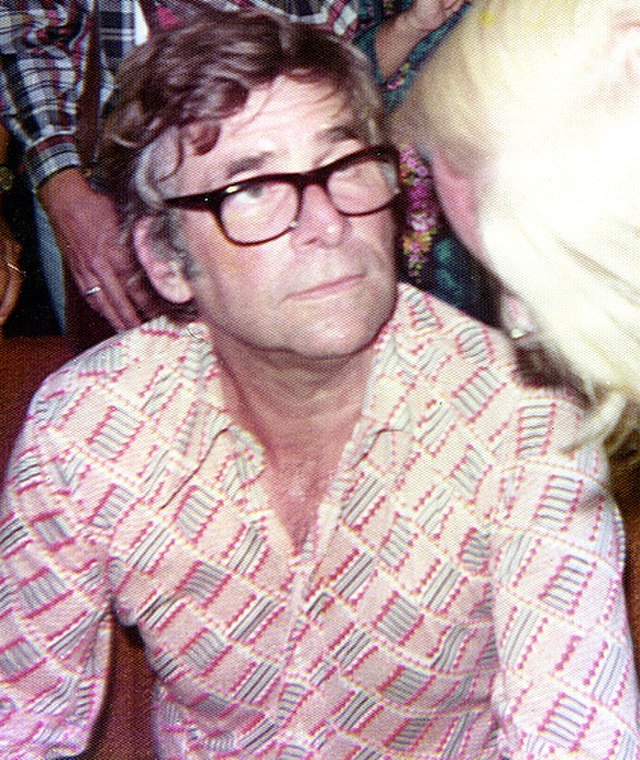Startrek and modern-day surgery - how did we get here?
“Space, the final frontier. These are the voyages of the Starship Enterprise. Its five-year mission to explore strange new worlds. To seek out new life and new civilizations. To boldly go where no man has gone before.”
Larry D. Moore, CC BY 4.0, via Wikimedia Commons
The first episode of Startrek was shown on the 8th of September 1966. It was created by the American Gene Roddenberry and each episode opened with those famous lines in the title.
It quickly became a worldwide phenomenon and was shown in sixty different countries. The programme allowed us to imagine what the future could look like. That included medicine and the show’s writers gave us their view of that future.
Diagnosis would be made using a hand-held scanner. Operations would be carried out by machines that covered your body. The future looked very exciting allowing doctors to diagnose, operate and successfully treat any problem a human being might have.
So, how far have we travelled along the road to the future Gene Roddenberry imagined? Let’s consider the development of the hospital operating theatre for example.
In some parts of the world, surgery is carried out in the operating room. However, they were originally known as a theatre because that’s exactly what they were. Surgeons would perform operations whilst being observed by colleagues and students. The photograph shows an early operating theatre.
Internet Archive Book Images, No restrictions, via Wikimedia Commons
As you can see in this photograph the stage is the operating table and it is surrounded by galleries to allow the audience a magnificent view of the operation. The photograph shows the oldest surviving operating theatre built in 1804 at the Pennsylvania Hospital in Philadelphia. The operating theatre was a form of entertainment. The public would fill the galleries to see a life saved or a life extinguished. Surgery was a kind of performance, and the operating theatre the surgeon’s stage. Onlookers viewed writhing bodies and glinting instruments. They heard moans and cries from the patient who may or may not have received some anaesthetic. What you will notice in the photograph is that apart from the operating table and a few trolleys there is no equipment. That’s because no one had invented any.
Operating had to be carried out in daylight, usually with the addition of candles. Anaesthetic gases had been around from the middle of the 19th century. Surgical instruments have been around since the dawn of time. Anaesthesia allowed surgeons to operate deep inside the body and there was an explosion of new surgical instruments. Once the concepts of asepsis and sterilisation were understood in the early 20th century, operating theatres became closed rooms and only surgical staff were allowed in. Lighting and ventilation were introduced. Side rooms allowed equipment to be sterilised before use. Surgical staff could wash their hands and change into gowns and masks before entering the theatre.
See page for author, CC BY 4.0 , via Wikimedia Commons
This photograph was taken in the early 20th century and there was still very little equipment to be seen.
All that changed in 1918 when the British anaesthetist HEG Boyle, introduced a continuous flow anaesthetic machine. Nitrous oxide, ether and oxygen were combined as the anaesthetic gas. The gasses were compressed into a liquid form in metal cylinders, allowing anaesthesia to become more portable. The machine became known as the Boyles Apparatus and soon became a familiar sight in the operating room.
See page for author, CC BY 4.0 , via Wikimedia Commons
Arguably, Boyles apparatus was a game changer and throughout the 20th century the operating theatre changed beyond all recognition. Boyles apparatus was improved and developed into the modern anaesthesia machine that is in every operating theatre across the globe.
DiverDave, CC BY-SA 3.0, via Wikimedia Commons
Existing equipment such as the operating table, lighting and trolleys improved remarkably. For example, the modern operating table is designed for versatility and adaptability across a wide range of operations. They can be adjusted for height and length, can be tilted to either side, and tilted horizontally. The head section is removable and can have a variety of attachable head rests. New equipment was introduced into the operating room including:
Patient monitoring systems to check vital signs.
Surgical displays, including wall displays and large format displays, mounted to surgical light arms, equipment columns, or a wall and are used to display a close-up, crisp view of the surgical site especially during minimally invasive surgery.
Operating room integration systems have been introduced. Briefly these systems connect technology, information, and personnel throughout the hospital to create a system that reduces the dependency on mobile equipment. Multi-image touchscreen displays, and real-time monitoring systems, allow the surgical team to have limitless access to patient information and resources outside the theatre.
So, the operating theatre has now become a complex environment surrounding the patient who is the most vulnerable person in the room.
We have travelled a long way along the road imagined by Gene Roddenberry in 1966 and the introduction of robotic surgery brings us closer to his vision of operations being carried out by machines that covered your body. But we aren’t quite there yet.
Surgical teams are not only carrying out complex surgery, but they are also closely monitoring their progress and the health of the patient. Given the intensity of the situation it is vital that everything is done to protect the patient. That is still work in progress.
Here at Innovgas we developed NoPress which is an eye pressure shield designed to completely protect a patient’s eyes. Routine use of NoPress ensures that the surgical team can focus without having concerns for the patient’s eyes.
Author: Niall Shannon, European Business Manager, Innovgas
This article is based on research and opinion available in the public domain.
Interested in a Free Sample?
Free samples of NoPress, EyePro & BiteMe available upon request.
Conditions apply.









